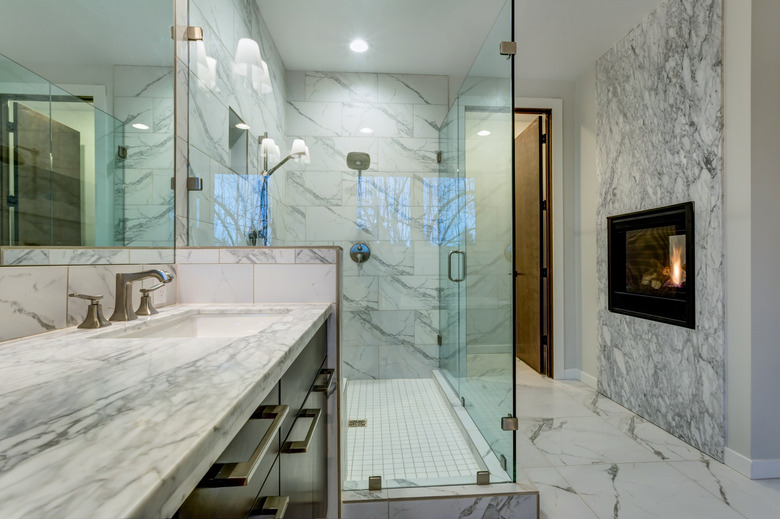How To Cut A Cultured Marble Vanity Top
We may receive a commission on purchases made from links.
It looks like real marble, but cultured marble is a manufactured product that isn't nearly as hard as marble or any other type of stone. As Countertop Specialty explains, cultured marble is actually a combination of resins and marble powder. This means you can cut it with wood-cutting tools.
Before you jump to the task prematurely, you should probably know that all that stone dust is going to wear a wood-cutting blade down quickly, and the dust can get in your eyes, so wear goggles. When the blade gets dull, it will melt its way through the material rather than cut. You don't want that, and you don't want to ruin blades if you don't have to, so you might want to consider alternatives to treating your cultured marble countertop like a piece of wood.
Go With a Grinder
Go With a Grinder
The safest way to cut cultured marble is to treat it like real marble and cut it with a grinder. You can use an angle grinder or you can fit your circular saw with a grinder blade. An angle grinder is the better tool for cutting out the sink hole, but if you just need to cut a straight line to shorten the countertop, a circular saw will definitely work.
Grinding your way through cultured marble generates a good amount of heat — enough to actually melt the resin — so have a squirt bottle filled with water handy to spray the blade and keep it cool. If you could use a wet saw, water would automatically cool the blade. However, a wet saw is a stationary tool, so it won't work in this situation. If the edges do burn or soften, you can sand them smooth afterwards.
Tips for Using Saw Blades
Tips for Using Saw Blades
Three things should be on your mind as you contemplate cutting your cultured marble countertop with a wood-cutting blade. The first concerns how much the blade will be damaged, the second concerns how much the countertop will be damaged and the third concerns possible damage to yourself.
Using a standard 24-tooth carbide tipped utility blade pretty much guarantees maximum damage to the blade and the countertop, but you'll be OK if you cut slowly and wear goggles. For the sake of the blade and the marble, though, it's better to choose a plywood cutting blade with a minimum of 60 teeth.
If you have to use a utility blade, consider doing as Astria Po suggests on a YouTube video and install the blade backward. The saw will still cut with the teeth facing in the opposite direction, but it will cut more slowly and, importantly, without chipping. Cutting this way increases the likelihood of kickback, so keep a firm hand on the saw and don't force the blade.
Whether you use a plywood blade or a utility blade installed backward, you'll get a cleaner, chip-free line if you cut from the back of the slab rather than the front or, if you have to cut from the front, you lay masking tape on the cutline.
Notches, Corners and Cleaning Up
Notches, Corners and Cleaning Up
You sometimes have to cut small notches in a countertop to get it to fit around an obstruction, and neither a saw nor an angle grinder can do this job. You need a jigsaw with either a metal cutting blade or a diamond grit blade. Both blades will proceed slowly, and you'll have to squirt water occasionally to keep them cool.
After you cut cultured marble, the edge is rough and possibly has burn marks, so it needs to be cleaned up. Marcraft recommends sanding with 60-grit sandpaper, which is a rough grit that is bound to leave scratches. Follow it with a succession of progressively finer grits up to 150 or 220 grit, depending on how smooth you want the edges.
